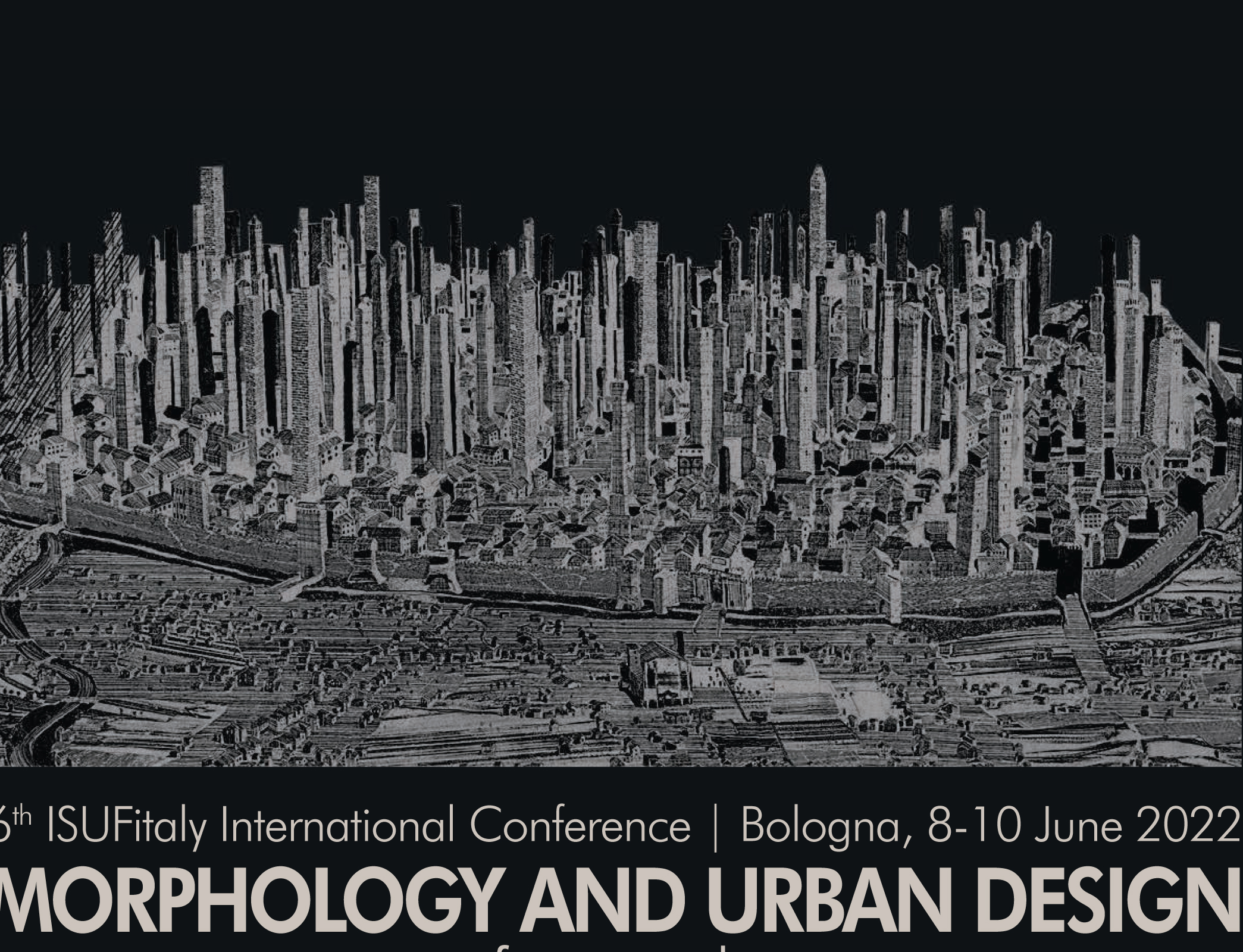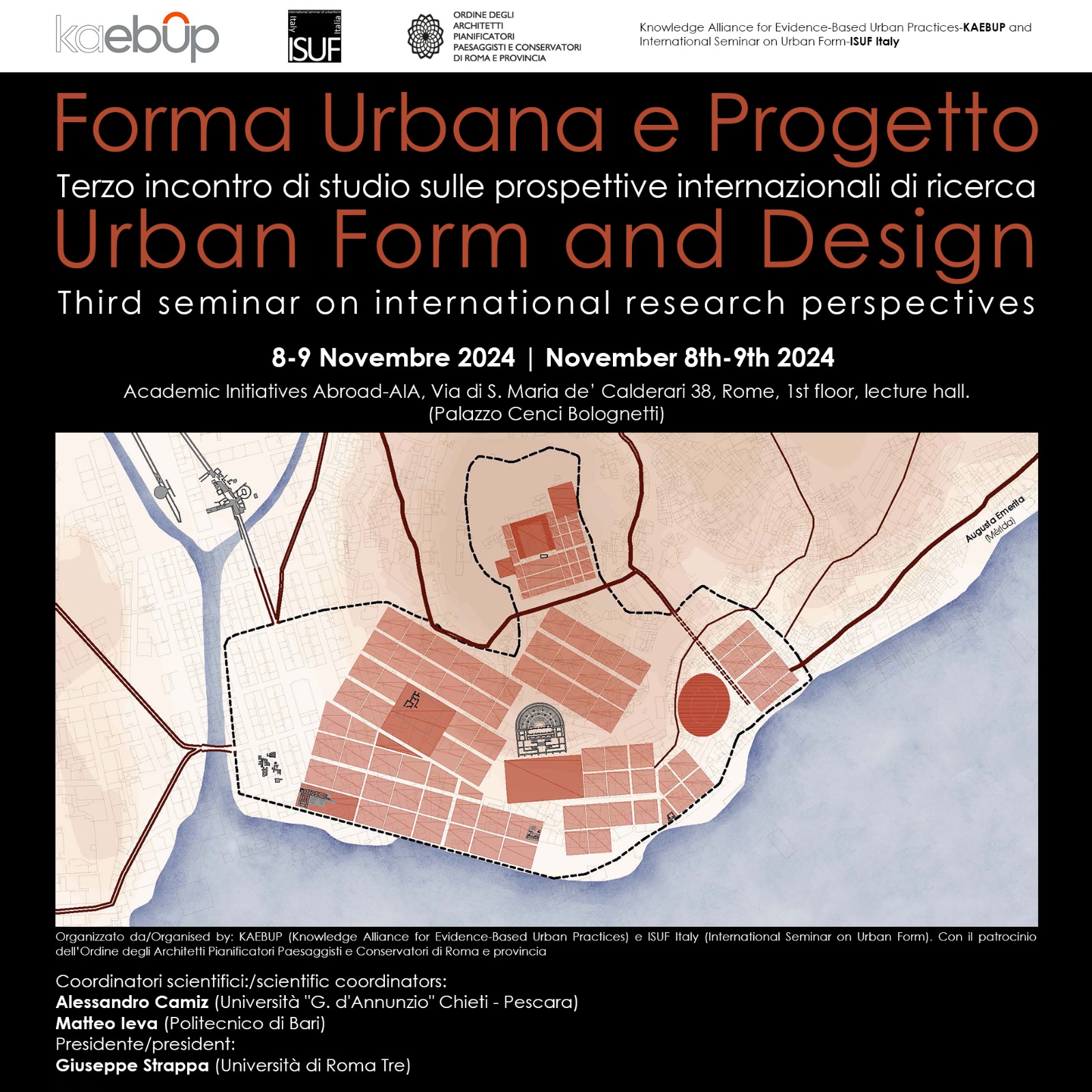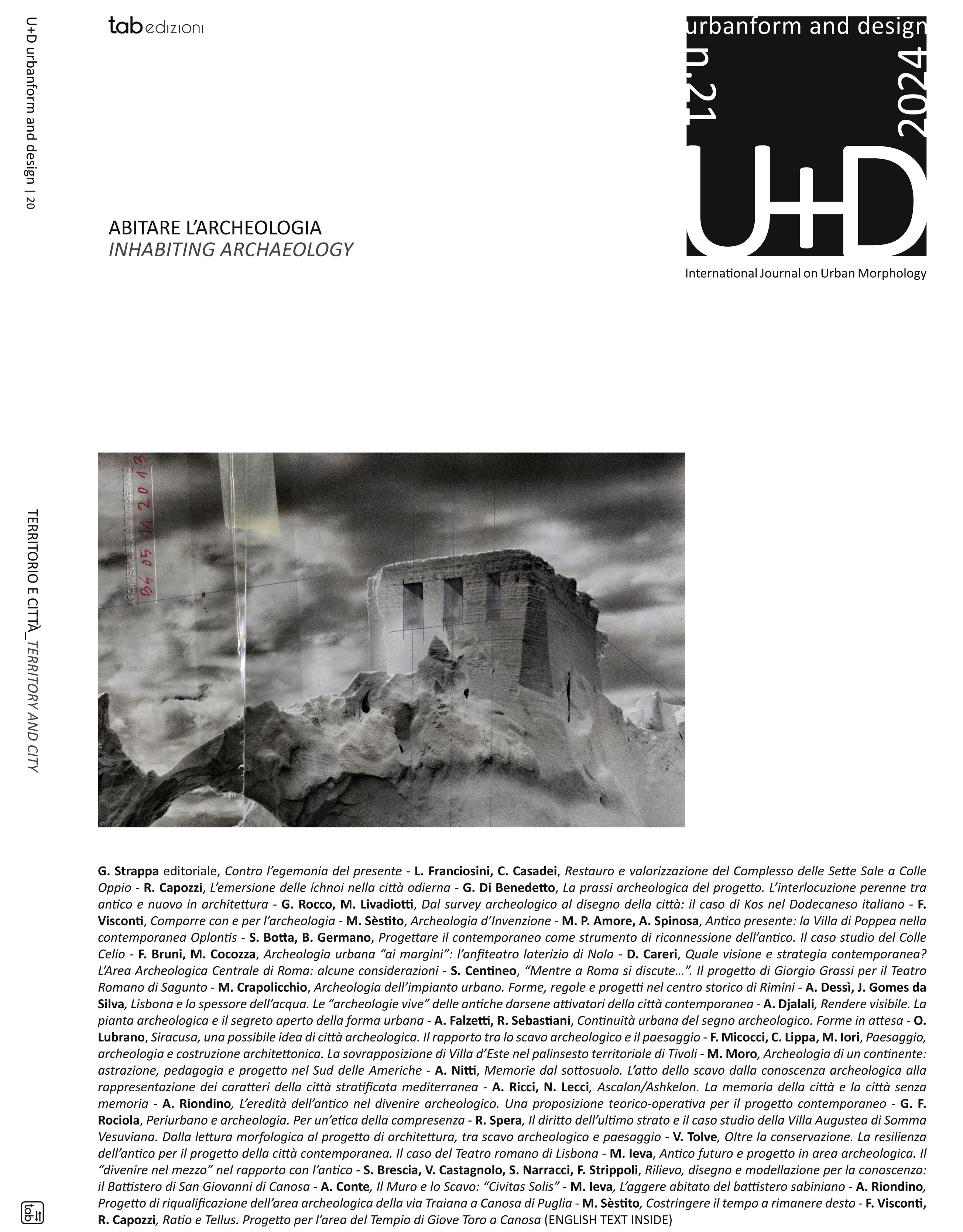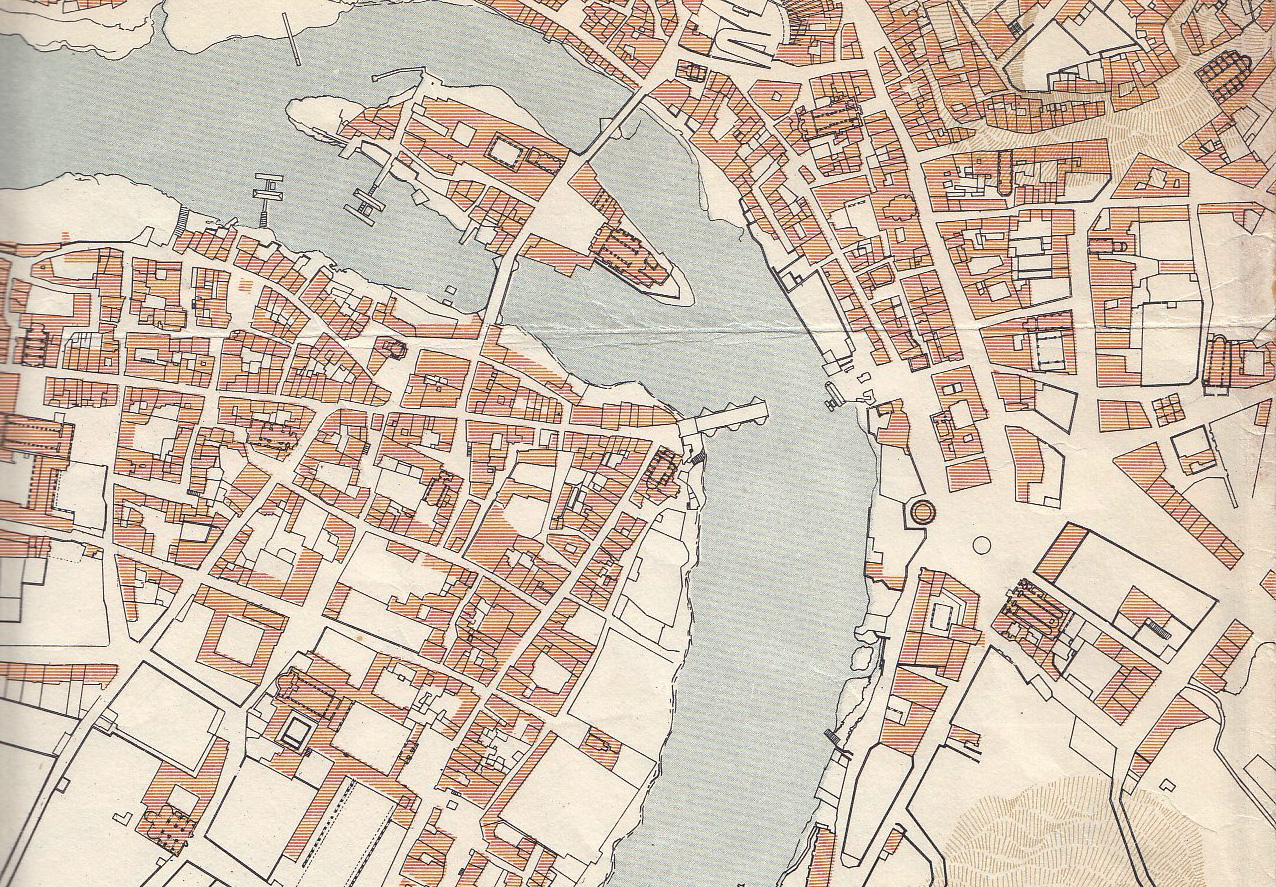
PROCEEDINGS_ISUFITALY 2022 BOLOGNA_
Sixth ISUFItaly Conference Presentation
Giuseppe Strappa
ISUFITALY President
We open today the sixth conference organized by the Isufitaly
Association, the Italian network of the International Seminar on Urban Form that we founded 38 years ago with the contribution of the English school of geographers which followed the scientific tradition of the researches of M.R.G Conzen (which had, in turn, roots in the tradition of German cultural geography) and the school of Italian architects referred to the studies of Gianfranco Caniggia and Saverio Muratori, with its roots in the studies on urban form conducted between the wars by innovators such as Gustavo Giovannoni, Arnaldo Foschini, Giovan Battista Milani.
From the beginning it seemed clear to all of us how useful the
disciplinary differences and how fertile integration between the two
groups were.
Geography is a fundamentally descriptive discipline. However, it
was interpreted by the Conzenian school with great attention to the
shape of the city, and after all the Muratorian school considered
reading, in turn, intended as a critical study of the built reality, an
integral part of the architectural design itself. Indeed it considered
the very form of the territory as architecture. This explains why our
Association, made up mainly of architects, had the project as the
central object of our studies.
Isufitaly was founded much later, in March 2007, with the aim of
promoting above all those studies in urban morphology having the
architectural design as their goal.
In these sixteen years, during which I had the honour of being its
president, the Association has grown a lot, gaining a significant role
in the context of urban morphology scholars.
I think a good job has been done, despite few inevitable mistakes.
Above all we remained consistently in our cultural area of interests,
within the sphere of what can be rationally verifiable and didactically transmittable. This in a cultural context in which the disciplinary boundaries of the architectural design seemed increasingly uncertain. Today each of us knows well that beyond those boundaries other important questions arise, of different nature, linked to languages and meanings, to new investigation techniques, to perception and to the artistic component of our work. But we also knows that it is crucial to preserve and develop in contemporary terms a nucleus of knowledge and methods which allows any aesthetic synthesis to be based on sharable foundations, as required by the civil responsibility of our work.
In this spirit, since its foundation, the Association has organized
conferences and communicated its activities. As president, I have
also considered vital the parallel activities in which the members of
Isufitaly participate, such as the organization of meetings, university
courses and publications.
It seems to me that, over time, even in these specific activities, our
Association has earned the esteem of similar organizations which, in
the wake of Isufitaly, have been founded all over the world. 13
It would take too long just to list the activities carried out by all of us
in these years.
I will only mention the two most recent, linked to each other, which,
I believe, have had particular success and international echo. The
first arises from the idea of transforming Isufitaly, from a structure that only plays an aggregative role and disseminates the themes of urban morphology, into an active subject, which carries out research and manages its organization. The occasion was the Kaebup project,
(Knowledge Alliance for Evidence-Based Urban Practices)
coordinated by Nadia Karalambous of the University of Cyprus with
the aim of studying the relationship between urban morphology and
design. Unlike the other participating academic partners, who
reorganized the research within the university structures, I chose to
involve Isufitaly which was supposed to represent, symmetrically to
other departments, the Italian referent in research management. It
should have been a first experiment: other members could have
brought other projects and funding, contributing, while their
autonomy would be respected, to strengthening the scientific
credibility of the Association.
As part of the research, some of us organized the ISSUM, International Summer School in Urban Morphology, which we will discuss in a future session in this conference. I think it could be a useful experiment not only for Isufitaly but also for all the Isuf regional networks and could have interesting developments.
As president of Isufitaly let me therefore say that the outgoing Isufitaly Board has not only taken care of the administrative aspect of the Association, but of an organic structural project that includes
communication (conventions, conferences, website) research (
participation in financed projects) and, finally, teaching (with the
Summer School).
Let me also make a brief consideration on the future of Isufitaly.
As it should be, within Isufitaly the interests of each of us, our beliefs, even our own values, have differentiated, and are increasingly differentiating, over time. The reasons are several (scientific, professional, academic) and all valid, but we must not hide the fact that, for this reason, we are going through a phase of crisis completely new in the story of our common work.
Change, however, is the salt of any structure aimed at experimentation. If it is likely that this condition leads to difficulties in organizing common work, also implying a risk of losing our identity, it is also true that the differences that have arisen could constitute, if well used, not a reason for division, but a resource. And since I consider that my duty, under the new conditions, has been
exhausted, I believe that whoever will takes my place, will have to
place this consideration at the centre of future projects.
A mention to the specificity of this conference.
This sixth Isufitaly meeting has a particular character for several
reasons, all linked to the fact that it takes place in Bologna. For the
first time it is not organized within an architecture faculty but an
engineering one, opening up, in my opinion, a new field of interests
for Isufitaly. I recall that the Bologna Faculty of Engineering boasts an illustrious tradition in the field of urban studies, and that a well-known representative of it, Adolfo Dell’Acqua, participated in our first conferences proposing important reflections on the integration
between morphology and design. This tradition continues today, in
contemporary terms, with the work of Annarita Ferrante (co-chair of this conference) on the existing building heritage.
Bologna was also the seat of some of the most interesting urban
experiments in Italy.
I recall, among others, the innovative ideas of Pier Luigi Cervellati on
the function of the historic centre organically understood in the
context of the entire urban and territorial organism.
Furthermore, Bologna has a particular interest for us as well for the
tradition of studies and experiments on the relationship between
governance and the city development process. Not surprisingly, the
city has had, over time, administrations that have sometimes been
an example of a virtuous management in the transformations of the
building fabric.
For this reason, some of the central themes of the conference are
precisely the problems of urban policy, governance, urban
communities and public space as a laboratory for transformation.
Another relevant theme is that of the renewal of the analysis and
design tools of the urban space, the study of new technologies
dedicated to new environmental strategies.
Of course, ample space will be given to traditional themes of our
conferences such as the reading and design of the existing city
integrated with the ever-current theme of urban regeneration, I
believe that the organizers of the conference and their collaborators
have done a generous and intelligent job. I thank them all on behalf
the Board of the Association and I wish everyone a good job for the
next few days.
CLICK TO CONTINUE
PROCEEDINGS_ISUFITALY 2022 BOLOGNA_


 Forse uno dei cambiamenti più rivoluzionari in corso nella nostra vita quotidiana è la scomparsa della carta stampata. Una sparizione non progressiva, come è avvenuto nel passato per tutti i cambiamenti epocali, ma rapidissima, che si sta consumando in pochi anni, a cominciare proprio dalla Cina, dove l’informazione è già quasi completamente digitale e dove pure la carta stampata era nata attraverso secoli di esperimenti. Da noi, solo nell’ultimo anno, i più importanti giornali nazionali, già in forte calo da tempo, hanno perso il 10% delle vendite e in molti concordano che il 2040 sarà la data estrema della loro vita. Alle biblioteche, deposito di memorie e saperi, si vanno sostituendo le memorie removibili che registrano quello che sta avvenendo nello spazio di pochi anni, forse mesi, e che possono essere eliminate con pochi click, liberando spazi virtuali per informazioni più urgenti. L’operazione naturale di “archivia- re” i dati che sono stati acquisiti, a fronte della loro enorme quantità, è sostituita dall’atto del “salvare”, proteggere dalla perdita di memoria invasa da un eccesso di informazioni.
Forse uno dei cambiamenti più rivoluzionari in corso nella nostra vita quotidiana è la scomparsa della carta stampata. Una sparizione non progressiva, come è avvenuto nel passato per tutti i cambiamenti epocali, ma rapidissima, che si sta consumando in pochi anni, a cominciare proprio dalla Cina, dove l’informazione è già quasi completamente digitale e dove pure la carta stampata era nata attraverso secoli di esperimenti. Da noi, solo nell’ultimo anno, i più importanti giornali nazionali, già in forte calo da tempo, hanno perso il 10% delle vendite e in molti concordano che il 2040 sarà la data estrema della loro vita. Alle biblioteche, deposito di memorie e saperi, si vanno sostituendo le memorie removibili che registrano quello che sta avvenendo nello spazio di pochi anni, forse mesi, e che possono essere eliminate con pochi click, liberando spazi virtuali per informazioni più urgenti. L’operazione naturale di “archivia- re” i dati che sono stati acquisiti, a fronte della loro enorme quantità, è sostituita dall’atto del “salvare”, proteggere dalla perdita di memoria invasa da un eccesso di informazioni.
